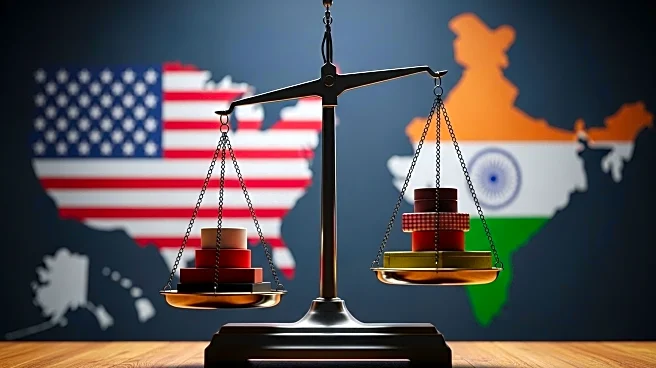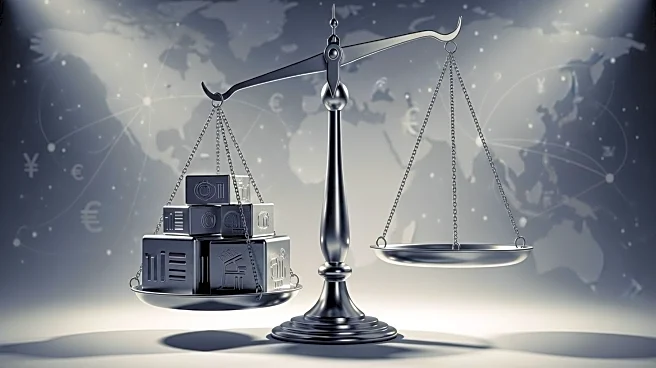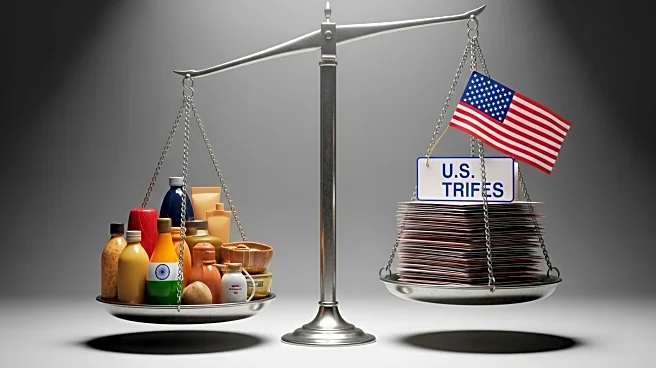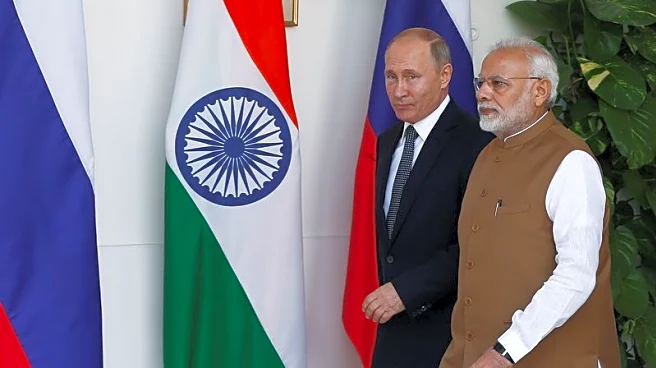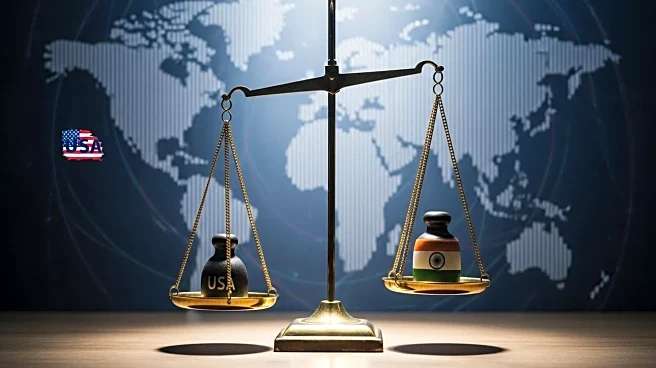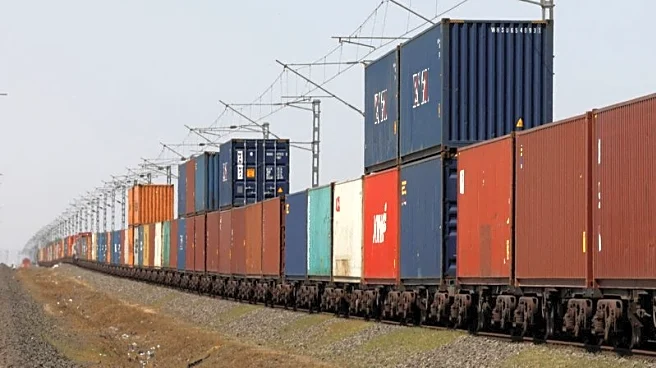What's Happening?
President Trump has implemented a 50% tariff on imports from India, following through on a previous threat. This decision is a response to India's continued importation of Russian oil, which the U.S. views as supporting Russia's war efforts in Ukraine. The tariffs are expected to strain U.S.-India trade relations, potentially leading to increased consumer prices in the U.S. and retaliatory measures from India. Key American exports to India, such as chemicals, oils, gases, and aerospace products, could be significantly affected if India imposes counter-tariffs.
Why It's Important?
The imposition of these tariffs could have wide-ranging effects on both the U.S. and Indian economies. For the U.S., industries that rely heavily on exports to India may face financial challenges, potentially leading to job losses and increased prices for consumers. For India, the tariffs could disrupt supply chains and increase costs for imported goods. The move also risks damaging diplomatic relations between the two countries, which have been strategic partners in various global initiatives. The economic and political fallout could influence future trade negotiations and international alliances.
What's Next?
India has indicated it may respond with its own tariffs on U.S. goods, which could escalate into a trade dispute. Both countries may enter negotiations to mitigate the impact of these tariffs and seek a resolution. The situation will likely be closely monitored by international trade organizations and could influence global trade policies. Businesses in both countries will need to adapt to the new trade environment, potentially seeking alternative markets or adjusting their supply chains.




